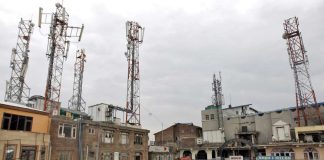JANUARY 22, 2024

Goals are as important for societies as they are for individuals. Such a goal could be in the form of a utopia – an imagination of perfection – which is not fully attainable but propels a society to work in that direction. Different philosophers have thought of different utopias from time to time. Plato has talked about an ideal state, Karl Marx has discussed commune, Sant Ravidas has talked about Begumpura and for Mohandas Karamchand Gandhi and many Indian philosophers, that ideal state is Ram Rajya. These utopias talk about material well-being, equality, social harmony, and kinship in their own different ways.
The Indian conception of an ideal state (Ram Rajya) goes a step further and talks about both material as well as spiritual well-being. This is described beautifully by Maharshi Kanada in one of the sutras of Vaisheshik philosophy, one of the six foremost schools of Hindu thought: ‘Yato abhyudaya ni-shreyas sansiddhi sa dharma’. Meaning, “That, which directs and leads to the attainment of abhyudaya (material well-being) in the world; that shows the pathway to the cessation of grief and pain and gets the one to nihshreyasa (spiritual well-being) thereafter, is dharma.”
What Ram Rajya embodies
Ram Rajya is an idea that embraces both abhyudaya and nihshreyasa – material and spiritual well-being. After countering problems (like Covid-19) in recent years, we have learnt that only material prosperity cannot provide solace to humankind. We need a model that ensures space for mental well-being, inner and outer peace and social harmony.
There should be minimum conflict among individuals and nature; men and women; oriental and occidental civilisations. We don’t need politics where one is ‘versus’ another but a politics where one supplements the other; where everyone is anchored to the thread of integration; where one understands the fundamental unity that manifests in diverse ways. The ideology of individualism that gained currency in the last two centuries wages war against every institution, rejects fundamental unity and creates the perception of being surrounded by enemies. Incessant pursuit of worldly pleasures has made us a slave to our senses. We buy sorrows disguised as happiness.
But look at the celebration around the pran pratishtha at Ram Mandir in Ayodhya. Something seems to have shifted. There is no animosity against anyone. Small things matter – from tiny pouches of akshat (rice) to five diyas, simple songs and aartis of the folk to arts and crafts. A sense of catharsis and a shedding of centuries seems to be unfolding with people feeling blessed to be witnessing the moment.
This celebration signifies that the moment of Ram Rajya has arrived. This, of course, was not possible without bringing back Ram to his Janmabhoomi (Motherland) from where he was removed around 500 years back.
Ushering in Ram Rajya
As Prime Minister Narendra Modi performs the rituals for the Pran Pratishtha of Ram Lalla (childhood likeliness of Ram) statue in Ayodhya, it will be a reclamation that Ram Rajya has dawned in India. His claim comes from confidence in his work in the last 10 years of his government. The work he has done for different sections of society in the field of social and physical infrastructure is unparalleled when compared to the work done in the same period by his predecessors. There are megaprojects where he performed stone-laying ceremonies and also inaugurated the completed projects.
Many pending projects, a pitiful legacy of the past, were completed by his government. Schemes like Jan Dhan, Ujjawala, Ayushman Bharat, PM Awas, PM-Kisan Samman Nidhi, Mudra loans, Stand Up India, Swachh Bharat and many more were implemented effectively. The beneficiaries of some of these policies are now crossing the 50 crore number, which is somewhat equal to the combined population of the United States and Russia.
Around 80 crore people (more than the population of Europe) are entitled to free ration in India and will keep getting it for the next few years. More than 200 crore shots of the Covid vaccine were given to people during and after the pandemic, and we avoided the biggest human crisis in the history of the world. The policies, programmes and schemes are huge in numbers, high in effectiveness and with minimum leakage and pilferage.
In Ramcharitmanas, Goswmai Tulsidas writes, “Daihik Daivik Bhautik Tapa, Ramraj nahi kahuhi vyapa,” which means there was no suffering of any kind in the Ram Rajya. This is what PM Modi has tried to ensure for many years before going to Ayodhya.
For hundreds of years, Ayodhya was ‘Shriheen’ (without sheen) as Ram was in exile for almost 500 years. As the Hindu God returns on 22 January, Ayodhya is aglow again, anticipating a new phase of prosperity. The initial reverberation of prosperity could be heard and felt in and around Ayodhya in the countdown to his arrival.
This period appears as the dawn of a new era with aspirations and hopes riding high as do the engines of society and governance. There is now a broad consensus on most issues and how they have to be dealt with. We have crossed a threshold in terms of numbers to take the country forward. The idea of Ram Rajya leads to this consensus where cultural values and governance go hand in hand.
Opinion by Swadesh Singh: Swadesh Singh teaches Political Science at Delhi University and is the author of ‘Ayodhya Ram Mandir: Bharat’s Quest for Ram-Rajya’, published by Rupa Publications. Views are personal.
Courtesy: ThePrint / PTI

































































































